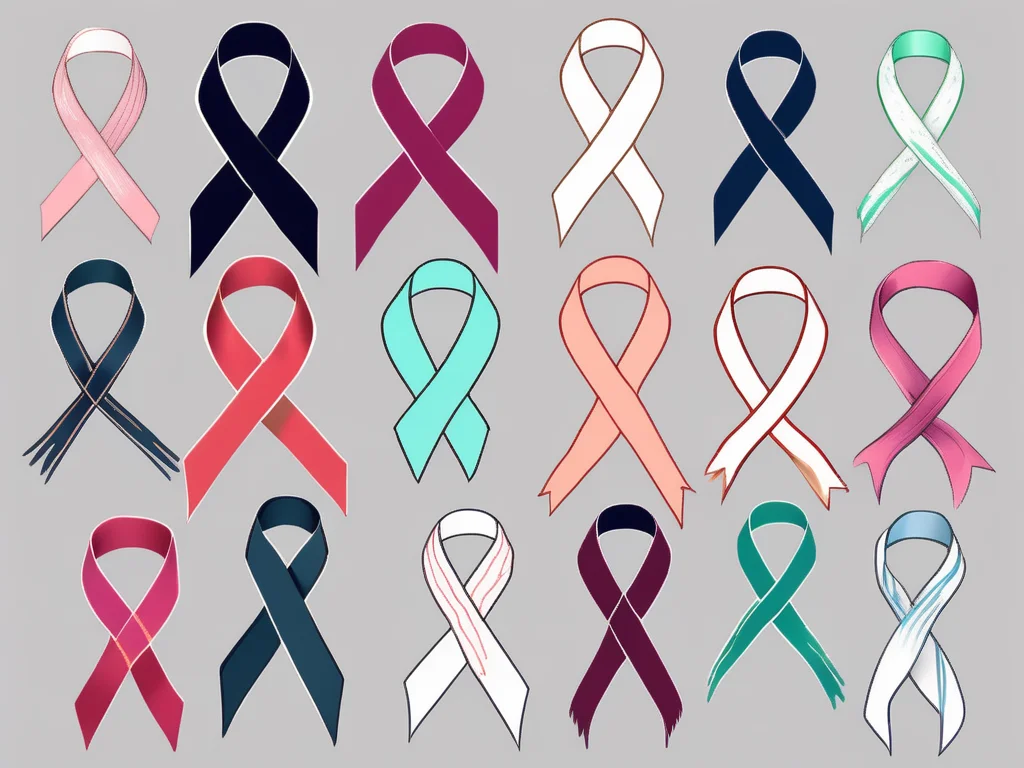Cancer ribbons are more than just colorful symbols—they represent hope, solidarity, and a collective fight against cancer. Each ribbon color corresponds to a specific type of cancer, raising awareness and fostering support for patients, survivors, and their families. This guide explores the significance of cancer ribbons, their history, and the meaning behind each color, empowering you to join the fight against cancer.
What Are Cancer Ribbons and Their Purpose?
Cancer ribbons are visual symbols used to raise awareness about different types of cancer and show support for those affected. These ribbons unite communities, spark conversations, and promote advocacy for research, early detection, and better treatments. By wearing a ribbon, you signal solidarity with cancer patients and contribute to the global effort to combat the disease.
The tradition of using ribbons for awareness began in the 19th century, but it gained prominence in the 20th century when specific colors were assigned to various cancers. Today, cancer ribbons are a universal symbol of hope, seen at fundraising events, walks, and support groups worldwide.
The History of Cancer Ribbons
The use of ribbons as symbols of support dates back to the 19th century, but their association with cancer awareness became widespread in the 1970s. The pink ribbon, introduced in 1991 by the Susan G. Komen Foundation for breast cancer awareness, marked a turning point. Since then, ribbons have evolved into a global symbol of unity, with each color representing a specific cancer type. These ribbons highlight the importance of early detection, research funding, and patient advocacy.
Pink Ribbon: Breast Cancer Awareness
The pink ribbon is the most recognizable cancer ribbon, symbolizing the fight against breast cancer. It represents hope, strength, and solidarity for patients, survivors, and their families. The pink ribbon has driven global efforts like the “Race for the Cure,” raising millions for research, education, and treatment.
By wearing a pink ribbon, you advocate for breast cancer awareness and support innovative research to improve detection and prevention. This symbol transcends cultural and language barriers, uniting people worldwide in the fight to end breast cancer.
Blue Ribbon: Prostate Cancer Support
The blue ribbon represents prostate cancer, a disease that affects millions of men globally. Wearing a blue ribbon shows support for patients and raises awareness about the importance of early detection and treatment. It also encourages open conversations about prostate cancer, breaking the stigma surrounding the disease.
Blue ribbons promote advocacy for better diagnostics and research into more effective treatments, helping improve outcomes for those affected.
Yellow Ribbon: Bladder Cancer Awareness
The yellow ribbon symbolizes bladder cancer, the sixth most common cancer in the United States, with over 80,000 new cases diagnosed annually. Wearing a yellow ribbon demonstrates solidarity with bladder cancer patients and promotes awareness about this often-overlooked disease.
This ribbon encourages funding for research and better outcomes, reminding patients they are not alone in their fight.
Purple Ribbon: Pancreatic Cancer Advocacy
The purple ribbon represents pancreatic cancer, a disease with high mortality rates and limited treatment options. Wearing a purple ribbon shows support for patients and advocates for increased research and early detection methods.
Purple ribbons symbolize the urgent need for better treatments and support for those affected, fostering hope for progress in combating this devastating disease.
Orange Ribbon: Leukemia Support
The orange ribbon signifies hope for those battling leukemia, a cancer affecting people of all ages. By wearing an orange ribbon, you show support for patients, raise awareness, and advocate for innovative treatments.
This ribbon represents a collective commitment to improving the lives of leukemia patients through research and compassion.
Green Ribbon: Kidney Cancer Awareness
The green ribbon symbolizes kidney cancer, a disease affecting the organs responsible for filtering waste from the blood. Wearing a green ribbon supports patients and promotes research into better diagnosis and treatment options.
This ribbon serves as a reminder that kidney cancer patients have a community standing behind them in their fight.
Teal Ribbon: Ovarian Cancer Solidarity
The teal ribbon represents ovarian cancer, a silent and often deadly disease affecting women’s reproductive organs. Wearing a teal ribbon shows support for patients and raises awareness about the need for early detection and research.
This ribbon symbolizes hope and collective action to improve outcomes for those affected by ovarian cancer.
White Ribbon: Lung Cancer Awareness
The white ribbon symbolizes unity in the fight against lung cancer, the leading cause of cancer-related deaths worldwide. While often linked to smoking, lung cancer can also affect non-smokers. Wearing a white ribbon supports patients, raises awareness, and emphasizes the importance of research and compassion.
Gold Ribbon: Childhood Cancer Support
The gold ribbon represents childhood cancer, a distinct type of cancer requiring specialized treatment and research. Wearing a gold ribbon shows support for young patients and their families, highlighting their unique challenges and inspiring hope.
This ribbon advocates for increased funding and awareness to improve outcomes for children with cancer.
Gray Ribbon: Brain Cancer Advocacy
The gray ribbon symbolizes brain cancer, a disease affecting the brain and spinal cord. Wearing a gray ribbon supports patients and promotes research into better treatments and improved quality of life.
This ribbon represents a commitment to finding solutions and supporting those affected by brain cancer.
Why Cancer Ribbons Matter
Cancer ribbons are powerful tools for raising awareness, fostering solidarity, and driving action. Each color tells a story of resilience, hope, and community support for those battling cancer. By wearing a ribbon, you contribute to conversations about early detection, research funding, and patient advocacy, helping to create a world where no one fights cancer alone.
How to Get Involved with Cancer Ribbon Campaigns
- Wear a Ribbon: Show your support by wearing a ribbon for a specific cancer type.
- Participate in Events: Join walks, runs, or fundraising events like “Race for the Cure.”
- Spread Awareness: Share information about cancer ribbons on social media or in your community.
- Donate to Research: Contribute to organizations funding cancer research and patient support.
- Educate Others: Talk about the importance of early detection and treatment options.
Conclusion
Cancer ribbons are more than symbols—they are a call to action, uniting people worldwide in the fight against cancer. Each color represents a unique struggle, but all share a common goal: raising awareness, supporting patients, and advancing research. By understanding the meaning behind cancer ribbons, you can join the movement to create a brighter future for those affected by this disease. Wear a ribbon, start a conversation, and make a difference today.



